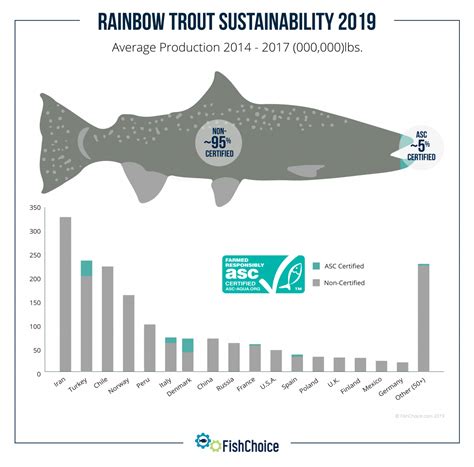Rainbow Trout: Size and Sustainability – A Fisherman's Guide
Rainbow trout (Oncorhynchus mykiss) are a prized catch for anglers worldwide, known for their vibrant colors and spirited fight. However, responsible fishing practices are crucial to ensure the sustainability of these beautiful fish. This guide delves into the average size of rainbow trout, factors influencing their growth, and the importance of sustainable fishing techniques.
What is the Average Size of a Rainbow Trout?
The size of a rainbow trout varies significantly depending on several factors, including genetics, water temperature, food availability, and fishing pressure. Generally, wild rainbow trout range from a few inches to over 30 inches, with average sizes varying considerably by location and water body. In some rivers and lakes, anglers can expect to catch trout averaging 12-18 inches. In others, particularly those with robust populations and ample food sources, trophy-sized trout exceeding 20 inches are not uncommon. Stocked trout, often raised in hatcheries, will often be smaller upon release and grow faster, but may reach a smaller average size than their wild counterparts due to environmental limitations.
What Factors Influence Rainbow Trout Growth?
Several key factors significantly impact the growth rate and ultimate size of rainbow trout:
Water Temperature:
Rainbow trout thrive in cool, well-oxygenated water. Optimal temperatures typically range from 45°F to 65°F (7°C to 18°C). Warmer water reduces their metabolism and growth rate, while extremely cold water can also hinder growth.
Food Availability:
Abundant food sources are crucial for rapid growth. Rainbow trout are opportunistic feeders, consuming a diet of insects, crustaceans, smaller fish, and even vegetation. Water bodies rich in aquatic invertebrates and other prey will support larger trout populations.
Genetics and Hatchery Practices:
Genetic variations within different rainbow trout populations play a role in their growth potential. Hatchery-raised trout, while often contributing to fishing opportunities, can exhibit different growth patterns compared to wild trout, depending on the rearing practices and genetic stock used.
Fishing Pressure:
Overfishing can significantly impact the size and age structure of a trout population. The removal of larger, older fish, which are typically the most prolific breeders, can lead to a decline in average size and overall population health.
How Can I Practice Sustainable Rainbow Trout Fishing?
Sustainable fishing is essential to ensuring the long-term health of rainbow trout populations. Here are some key practices:
Respect Catch Limits and Regulations:
Always adhere to local fishing regulations, including catch limits, size restrictions, and gear restrictions. These rules are in place to protect fish populations and maintain healthy ecosystems.
Practice Catch and Release:
Consider practicing catch and release, particularly for larger trout, allowing them to breed and contribute to future generations. Handle fish carefully and quickly to minimize stress. Use barbless hooks to facilitate easy release and reduce injury.
Choose Appropriate Gear:
Using appropriate fishing gear can minimize fish stress and injury. Strong, sharp hooks and appropriate tackle size minimize the struggle time, enabling a quick and safe release.
Protect Habitat:
Maintaining healthy aquatic habitats is crucial for trout survival. Support organizations that work to protect and restore rivers and streams. Avoid damaging riparian vegetation, which helps stabilize banks and filter pollutants.
What are the Impacts of Overfishing on Rainbow Trout Populations?
Overfishing can have devastating impacts on rainbow trout populations, leading to:
- Reduced average size: Removal of larger, older fish leads to a smaller average size within the population.
- Decreased genetic diversity: Loss of older, more genetically diverse fish can impact the resilience of the population.
- Population decline: Severe overfishing can lead to a decline in the overall population, impacting the sustainability of the fishery.
How Can I Identify a Healthy Rainbow Trout Population?
A healthy rainbow trout population is typically characterized by:
- A wide range of sizes: A good mix of smaller, younger fish and larger, older fish indicates a balanced population.
- Abundant food sources: The presence of abundant aquatic insects and other prey suggests a healthy ecosystem.
- Clear, cool water: Clear, well-oxygenated water is essential for trout survival.
By understanding the factors that influence rainbow trout size and practicing sustainable fishing techniques, anglers can help ensure that future generations will continue to enjoy this magnificent species. Responsible fishing is not just about catching fish; it's about preserving a valuable natural resource for years to come.

